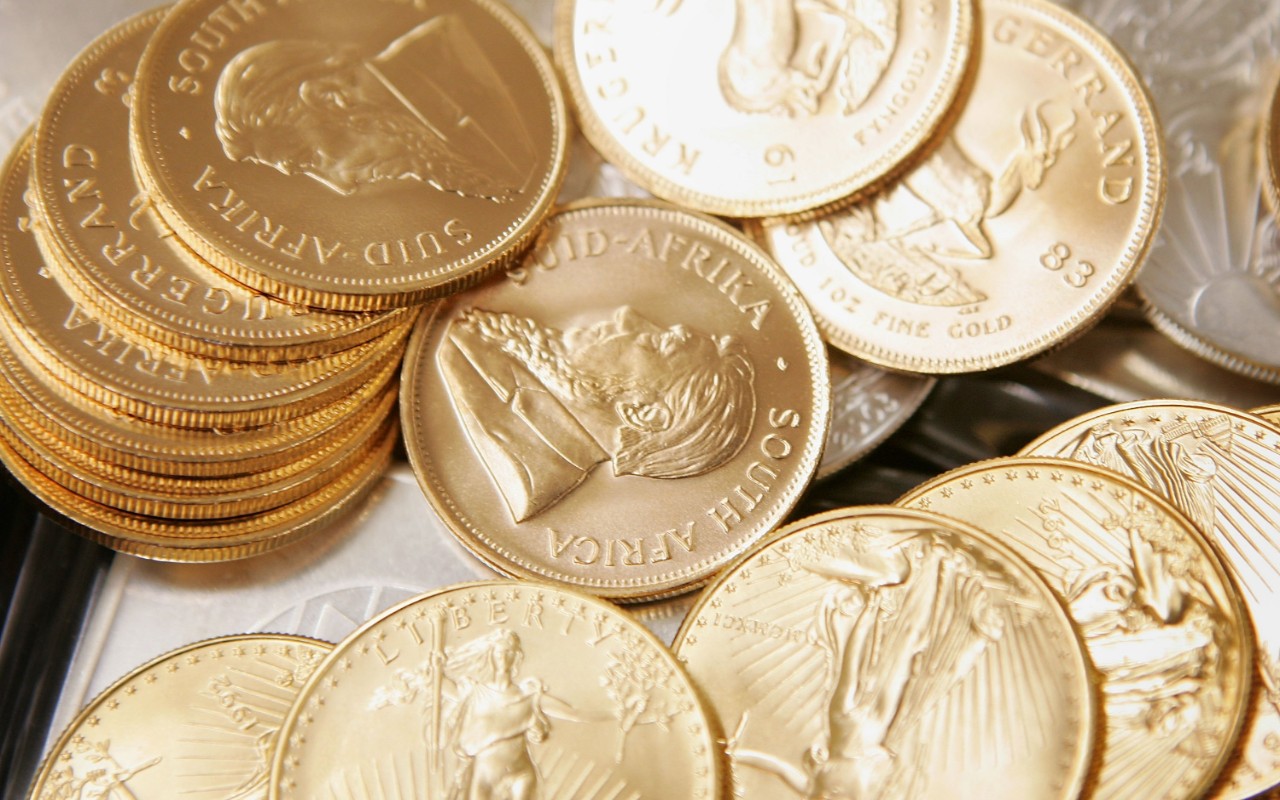How to Assess and Sell Your Collectibles
Your collectibles could be holding a fortune - or a pittance.


If you’re a fan of Antiques Roadshow, you’ve probably fantasized about discovering that your grandmother’s chafing dish is worth more than your car. But just because an item is old and cherished doesn’t mean it’s valuable.
Here’s a guide to assessing your collectibles — and to selling or donating the stuff you don’t want to keep.
Assessing your jewelry
If you think your grandmother’s engagement ring or your great-grandfather’s pocket watch is valuable, seek out an appraisal so that you can adequately insure it against loss, theft or damage. If you’re interested in selling the item, hire an accredited appraiser who will research and analyze the market, says Lynn Magnusson, one of the few appraisers in the country to hold accreditations with the American Society of Appraisers, the Appraisers Association of America and the International Society of Appraisers.
From just $107.88 $24.99 for Kiplinger Personal Finance
Become a smarter, better informed investor. Subscribe from just $107.88 $24.99, plus get up to 4 Special Issues

Sign up for Kiplinger’s Free Newsletters
Profit and prosper with the best of expert advice on investing, taxes, retirement, personal finance and more - straight to your e-mail.
Profit and prosper with the best of expert advice - straight to your e-mail.
An accredited researcher will assess comparable sales at auctions, jewelry stores and jewelry dealers. Bringing in a third party to vouch for the item’s value in the form of an official appraisal will increase the likelihood you’ll receive a fair price when you sell.
If you’re primarily looking to insure objects you plan to keep, you’ll want to get the replacement value, which an appraiser can provide by researching the cost of replacing your item with a new one (or a version that’s as close to the item as possible). If you want to donate jewelry to charity and deduct the donation on your tax return, ask the appraiser to provide the item’s fair market value, which is “the price that property would sell for on the open market between a willing buyer and a willing seller, with both having reasonable knowledge of the relevant facts,” according to the IRS.
You should fact-check an appraisal by reviewing the report and verifying that your appraiser noted any characteristics that could affect the jewelry’s value. If you see any errors, let your appraiser know and ask for a correction. Make sure the appraiser takes the jewelry’s maker into account because that’s the most important characteristic used to determine its value.
“Similar to artwork, it’s always about the artist,” Magnusson says. For example, buyers will pay a premium for a gold bracelet from Tiffany & Co. as opposed to a gold bracelet from Macy’s.
The next quality to consider is scarcity. Appraisers will assess the piece’s provenance, or origin, to determine how rare it may be. If the piece is from the collection of a historical figure or celebrity, such as Catherine the Great or Elizabeth Taylor, it could carry significant value.
Inherent qualities of an object, such as the quality of the metal and stones, will also affect its value. For example, an appraiser will assess the “four Cs’’ of a diamond: carat weight, color grade, clarity grade and cut grade. The Gemological Institute of America, which crafted this method, is the standard resource for jewelry appraisals. Appraisers typically use characteristics developed by the GIA to determine the value of gems and assess the metals.
Finally, a piece of jewelry should never be worth less than the sum of its parts. A buyer can always scrap the gold or silver and sell it to a refinery or remove the diamonds and sell them to a diamond dealer. You can search for the spot price of precious metals at a website such as www.kitco.com.
However, keep in mind that the precious metal in jewelry is typically mixed with other elements for color and/or strength, Magnusson says. For example, 14K gold jewelry is made up of 58.3% pure gold and 41.7% alloy. Shop around at jewelry stores and dealers to get the best price.
Assessing your coin collection

Unlike jewelry, which is often subject to wear from use, coins usually maintain their quality over time once they’ve been graded and valued because the grading process typically involves storing them as collector’s items. Institutions such as the Professional Coin Grading Service and Numismatic Guaranty Company grade coins on a scale reflective of their condition.
These companies will preserve the coin in a plastic case in a process known as slabbing. The cost to have coins slabbed depends on the type of coin and can range from $25 to $300 per coin. If you submit an entire collection for grading, you may be able to get a discount.
Coin grading institutions will assess a coin’s value based on its rarity. So, for example, a colonial coin (one issued in the British colonies before they became U.S. states), a limited issue coin or an uncirculated coin in mint condition may earn a higher grade than a more common coin in the same condition. You can get a sense of how rare your coins are through the Professional Coin Grading Service’s price guide, which lists prices for all types of American and colonial coins. The Numismatic Guaranty Company also has a price guide for coins from around the world.
Once you’ve determined the value of your coins, there are a number of marketplaces to turn to if you’d like to sell. “Coins are a very active marketplace,” Magnusson says. You can sell coins to a local dealer or take them to coin shows, such as the American Numismatic Association’s National Money Show or the World’s Fair of Money, where you can shop your collection to different dealers.
As with any other collection, you can also offer it for sale at online marketplaces such as eBay or Facebook Marketplace. If you choose this route, you’ll need to assume the responsibility of photographing, listing and managing negotiations with potential buyers. If you own a high-value coin or collection, you may want to turn to an auction house, such as Heritage Auctions or Stack’s Bowers Galleries, where you’re more likely to find buyers who can afford big- ticket purchases.
Assessing your sports memorabilia

Many sports fans have collected jerseys, equipment, stadium seats, trophies and baseball cards. As is the case with other collectibles, condition will play a key role in valuing your sports memorabilia, along with name recognition if the item is associated with a particular athlete or sporting venue. An autographed item may yield a high value as well, depending on who penned it.
Some items, such as baseball cards, will get the best value at specialized auction houses, says Thomas Ruggie, a certified financial planner based in Orlando and owner of a multimillion-dollar sports memorabilia collection. Baseball cards, like coins, are graded and slabbed, which makes them easier to value and store than some other types of sports memorabilia.
To authenticate your memorabilia, you’ll generally need to find someone who specializes in the specific type of item, Ruggie says. Look for accreditations such as Professional Sports Authenticator (PSA). Some companies use photo-matching technology to verify that an item belongs to a particular player, team or era in a given sport. If you have photos of the item being used in a game, that should also help in the authentication process.
Assessing your art
To get a sense of whether you have a high-value piece of artwork, first determine whether it’s a print or an original. If you suspect it’s a print, look for an edition number at the bottom of the piece. Some prints are valuable if the image is desirable, the artist is acclaimed or the edition length is limited. If a print run is small, then its relative rarity enhances its value.
It can be difficult to tell the difference between a limited-edition print and a reproduction print, says Peter Held, an art appraiser accredited with the American Society of Appraisers. “If you look at the surface closely with a magnifying glass and see a dot matrix pattern, that’s a reproduction print. And generally, those are a lot less valued than an original print made by an artist,” he says.
If you have an original work, consider its provenance to determine whether it may be a high-value piece. Look for its origin in receipts or other records from the purchase. If you have trouble reading the artist’s signature, try photographing it and using Google Lens — a tool that searches online for images similar to your photo — to help you determine which artist it may be.
If you suspect your art is valuable, find an accredited art appraiser with appraisal societies such as the ASA, the Appraisers Association of America and the International Society of Appraisers. Once you select an appraiser, you’ll probably be asked to identify the artist and provide documents, such as photographs, receipts and records of exhibits or publications that featured the artwork. Then the appraiser will use auction databases to compare the work with recorded sales. If the artist was represented by a gallery, the appraiser may ask the gallery for comparable sales to come up with a range of values for the work.
If you want to donate your artwork to a museum, the appraiser will contact the museum curator or registrar, depending on who is handling the donation, to acquire information you’ll need for tax purposes. An appraiser will fill in IRS Form 8283 for non-cash charitable gifts for you to use when filing your tax return so you can deduct the contribution (if you itemize).
The cost to appraise a work of art ranges from $500 to thousands of dollars, based on the time, type of appraisal needed and complexity of the market for the property, among other things. In addition to assessing value, some appraisers may point you to the best market for sale, whether it’s a gallery, an auction house or a private dealer, says Held. Market research alone with no appraisal may cost less, he says.
Assessing fine china
A complete set of fine china will typically earn you a better price than an incomplete one, but incomplete sets or even single pieces may be worth more than you expect. Many websites sell single pieces of china to buyers who want to replace items that were lost or damaged. If you’re looking to sell a single item or an incomplete collection, check out sites such as Classic Replacements and Replacements Ltd.
Before you accept a selling price, do some research to determine your item’s value. As is the case with most collectibles, consider condition, rarity, quality and maker. Since china is subject to wear and tear, search for cracks, chips and scrapes. Look for a maker’s insignia or a label identifying the material — French porcelain, for example. If the china is from a name-brand maker, research how similar sets or pieces have sold recently on secondary marketplaces, such as Facebook Marketplace and eBay.
Sometimes certain brands become popular and sell for higher-than-usual retail prices, Magnusson says. For example, Pyrex collections from the mid 20th century that are adorned with kitschy patterns are very popular now. A 1950s Pyrex collection recently sold on eBay for $1,300.
Rare books and archives
If you have a collectible book or document, an appraiser who specializes in rare books, manuscripts and archives can help you authenticate its value. But the fee to have an appraiser research the value and provide a report could run as high as $2,500, so before you hire one, try to get a sense of what your item or collection is worth by assessing it for any valuable characteristics.
If you determine that an appraisal is worthwhile, seek out an appraiser who follows the Uniform Standards of Professional Appraisal Practice, says John Henley, a rare books, archives and manuscripts appraiser with the ASA.
Generally speaking, condition is the most important consideration when valuing these items, Henley says. There are only a few exceptions to this. For example, if you have a Gutenberg Bible that’s in rough condition, you’re still going to get a lot of money for it, he says, because even a damaged Gutenberg is very valuable. Otherwise, if the book’s boards — the rigid flat sheets that form the central component of the book cover — are detached, the pages are soiled or it has fire damage, its value will be significantly diminished.
Recognition will also influence a book’s value. If there was significant media buzz about the book at one time, that could drive up the value. Scarcity will do the same, but not always, Henley says. Sometimes, an archive or manuscript can have what’s called “discovery” value, meaning there’s something within it that affects our understanding of history. Similarly, a compelling social history can enhance a collectible’s “association” value.
For example, an appraiser might ask whether a book was the author’s working copy or was given to a close associate or editor. If it was part of a famous collection, that could also increase its association value. For documents, content is king, Henley says.
If you own a document or archive with objectively interesting or intriguing content, that will increase its value. Content also matters when it comes to documents signed by someone with name recognition. For example, a letter signed by F. Scott Fitzgerald will be more valuable than a hotel registry signed by Fitzgerald, Henley says.
Protecting your collectibles
Whether you’re starting a collection or preserving one, your high-value items may not be included in a standard homeowners or renters insurance policy. You can get a rider on your policy to cover certain items, but riders won’t always cover the entire replacement value of an item. Another option is a separate insurance policy designed for collectibles. You’ll typically need an appraisal to verify the value of items you want to insure, and annual premiums will be based on a percentage of their value — typically about 1%.
To shield against damage and loss, store your collectibles safely. Artwork should be protected from exposure to light and dust. Delicate items, such as fine china, may be better suited for display than use. If you’re buying an item for your collection, ask the seller how they recommend preserving your collectible. Cool temperatures and moderate humidity will help preserve your item’s condition. Attics and basements are not typically ideal locations for storing your valuables.
Passing on collectibles to the next generation

If you plan on leaving your collection to your heirs, make sure they’re interested in taking it on and understand what the assets are worth. Leave them copies of any verification documents, appraisals and photographs, as well as notes on recent sales of comparable items.
A listing price of a single similar item won’t reflect its selling power as well as an average calculated from recent sales of multiple similar items, so consider keeping a log of recent sales of items that share characteristics with your collectibles. Search for your item on eBay using the advanced search option and filtering for only sold and completed items.
Diligent estate planning will help your heirs understand how to handle, preserve, insure, sell or donate the items. If you’d like to leave your collection to multiple heirs, obtain an appraisal of the total value of the collection and a breakdown of the cost of individual items so that you can make gifts of equal dollar value, if that’s what you want to do.
Keep thorough notes on the characteristics that render the items valuable. For example, if you plan to leave your heirs some of your sports memorabilia, indicate whether they are signed or have been used in a famous game. Kovels Antique Trader provides a price guide to a wide range of collectibles and antiques.
Tips for treasure hunters
One man’s trash can be another man’s treasure, but sometimes it’s just another man’s trash. Facebook Marketplace and eBay feature thousands of listings every day, and you never know what you might find from sellers seeking to do some spring cleaning. But verifying an item’s authenticity can prove challenging online.
Scavenging at estate sales for high-value items may take more time and effort, but you can bring a magnifying glass to search for characteristics that may not be detectable online, such as the clarity of a gem, the resolution of an art print or the condition of a piece of fine china. Negotiate the price if you can. The selling power of collectibles varies with changing market conditions.
Research recent sale prices of items that are similar to the one that interests you, taking into account whether you plan to resell it or keep it. If you can, get an appraiser on the phone to assess the value. If you can’t manage that, try using tools such as Google Lens to search online for images similar to a photograph of the item, which could help you identify an artist’s signature or a maker’s mark.
Note: This item first appeared in Kiplinger's Personal Finance Magazine, a monthly, trustworthy source of advice and guidance. Subscribe to help you make more money and keep more of the money you make here.
Related Content
Profit and prosper with the best of Kiplinger's advice on investing, taxes, retirement, personal finance and much more. Delivered daily. Enter your email in the box and click Sign Me Up.

Emma Patch joined Kiplinger in 2020. She previously interned for Kiplinger's Retirement Report and before that, for a boutique investment firm in New York City. She served as editor-at-large and features editor for Middlebury College's student newspaper, The Campus. She specializes in travel, student debt and a number of other personal finance topics. Born in London, Emma grew up in Connecticut and now lives in Washington, D.C.
-
 Turning 65 in 2026? Here Is Exactly How to Sign Up for Medicare
Turning 65 in 2026? Here Is Exactly How to Sign Up for MedicareWhether you’re months away from your 65th birthday or plan to work past retirement age, here are the steps to secure your Medicare coverage and avoid costly mistakes.
-
 A Free Tax Filing Option Just Disappeared: Here's What That Means for You
A Free Tax Filing Option Just Disappeared: Here's What That Means for YouTax Filing Tax season officially opens on January 26. But you'll have one less way to submit your tax return for free. Here's what you need to know.
-
 Georgia Income Tax Elimination: What the 2026 Tax Cuts Mean for You
Georgia Income Tax Elimination: What the 2026 Tax Cuts Mean for YouState Tax Georgia lawmakers aim to axe the state income tax by 2032. We break down the $16 billion fiscal shift, the fate of the state surplus, and which tax breaks are on the chopping block.
-
 Turning 65 in 2026? Here Is Exactly How to Sign Up for Medicare
Turning 65 in 2026? Here Is Exactly How to Sign Up for MedicareWhether you’re months away from your 65th birthday or plan to work past retirement age, here are the steps to secure your Medicare coverage and avoid costly mistakes.
-
 I'm 61 and Want a Divorce, but I Worry About My Finances. Should We Live Separately but Stay Married?
I'm 61 and Want a Divorce, but I Worry About My Finances. Should We Live Separately but Stay Married?We asked Certified Divorce Financial Analysts for advice.
-
 Is a Caregiving Strategy — for Yourself and Others — Missing From Your Retirement Plan?
Is a Caregiving Strategy — for Yourself and Others — Missing From Your Retirement Plan?Millions of people over 65 care for grandkids, adult kids or aging parents and will also need care themselves. Building a caregiving strategy is crucial.
-
 6 Financially Savvy Power Moves for Women in 2026 (Prepare to Be in Charge!)
6 Financially Savvy Power Moves for Women in 2026 (Prepare to Be in Charge!)Don't let the day-to-day get in the way of long-term financial planning. Here's how to get organized — including a reminder to dream big about your future.
-
 How to Use Your Health Savings Account in Retirement
How to Use Your Health Savings Account in RetirementStrategic saving and investing of HSA funds during your working years can unlock the full potential of these accounts to cover healthcare costs and more in retirement.
-
 I'm a Real Estate Expert: 2026 Marks a Seismic Shift in Tax Rules, and Investors Could Reap Millions in Rewards
I'm a Real Estate Expert: 2026 Marks a Seismic Shift in Tax Rules, and Investors Could Reap Millions in RewardsThree major tax strategies will align in 2026, creating unique opportunities for real estate investors to significantly grow their wealth. Here's how it works.
-
 When Can Tax Planning Be an Act of Love? This Family Found Out
When Can Tax Planning Be an Act of Love? This Family Found OutHow can you give stock worth millions to a loved one without giving them a huge capital gains tax bill? This family's financial adviser provided the answer.
-
 Who Said That? Match the US President to the Quotation
Who Said That? Match the US President to the QuotationWho better to give advice on aging, retirement and finances than a U.S. president? Our short quiz will determine whether you're a history buff or buffoon.